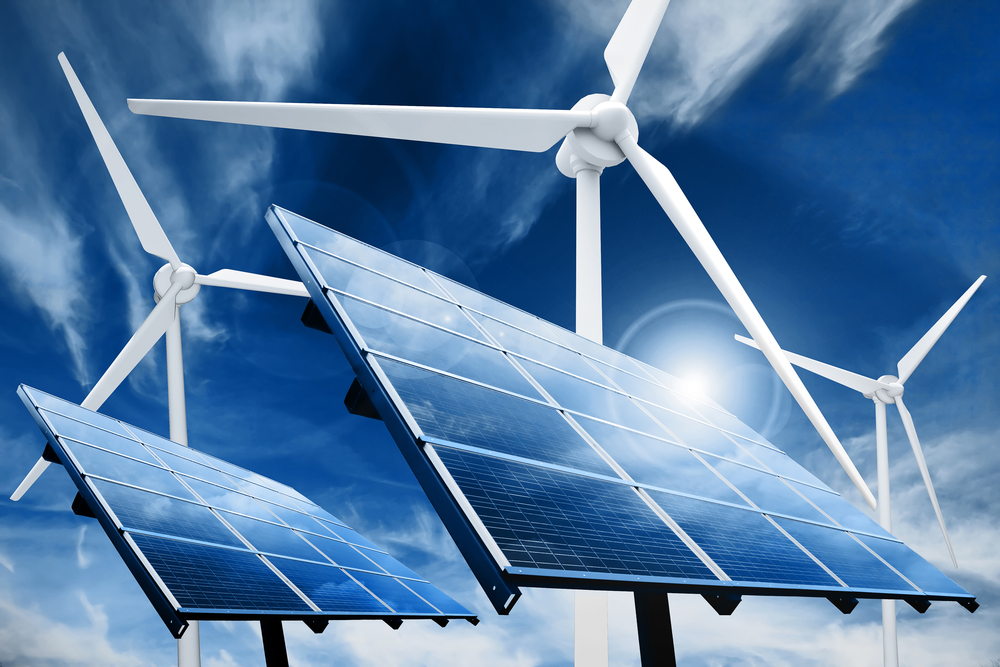The Advantages and Disadvantages of Solar Energy Compared to wind Energy

Solar energy and wind energy are both renewable sources of electricity that offer numerous benefits, but they also have their own advantages and disadvantages. Here's a comparison of the two:
Advantages of Solar Energy:
- Abundant Resource: Solar energy is abundant and widely available, with sunlight reaching the Earth's surface consistently throughout the day in most locations.
- Scalability: Solar energy systems can be installed at various scales, from individual rooftop solar panels to utility-scale solar farms, making them adaptable to different energy needs and applications.
- Low Operating Costs: Once installed, solar energy systems have minimal operating and maintenance costs, as they do not require fuel or moving parts and have few mechanical components to maintain.
- Quiet Operation: Solar panels generate electricity without noise or emissions, making them suitable for urban and residential environments where noise pollution and visual impact are concerns.
- Distributed Generation: Solar energy enables distributed generation and decentralized energy production, reducing transmission losses, grid congestion, and vulnerability to disruptions.
- Modular Design: Solar energy systems are modular and scalable, allowing for incremental expansion, customization, and integration with other energy sources and technologies.
Disadvantages of Solar Energy:
- Intermittent Availability: Solar energy generation is intermittent and variable, depending on weather conditions, time of day, and seasonal changes, which can affect energy output and reliability.
- Land Use Requirements: Utility-scale solar farms require large land areas for installation, which may compete with agriculture, conservation, or other land uses, leading to land-use conflicts.
- Energy Storage Needs: Solar energy systems may require energy storage solutions, such as batteries or pumped hydro storage, to store surplus energy for use during periods of low sunlight or high demand.
- Upfront Costs: The upfront costs of solar installations, including photovoltaic (PV) panels, inverters, mounting systems, and installation labor, can be relatively high, although costs have declined significantly in recent years.
- Environmental Impact: Solar energy production may have environmental impacts associated with manufacturing, transportation, and disposal of solar panels, as well as land disturbance and habitat fragmentation from large-scale solar farms.
Advantages of Wind Energy:
- Abundant Resource: Wind energy is abundant and widely available, with wind speeds varying by location and terrain, making it a reliable source of renewable energy in many regions.
- Cost-Competitive: Wind energy has become cost-competitive with conventional fossil fuels in many markets, with declining costs of wind turbines, improved technology, and economies of scale driving down the cost of electricity generation.
- Low Operating Costs: Once installed, wind turbines have low operating and maintenance costs compared to fossil fuel-based power plants, as they do not require fuel or water for operation and have fewer moving parts to maintain.
- Rapid Deployment: Wind energy projects can be deployed relatively quickly compared to large-scale conventional power plants, helping to meet energy demand and reduce greenhouse gas emissions.
- Energy Security: Wind energy enhances energy security by diversifying the energy mix and reducing dependence on imported fossil fuels, contributing to energy independence and resilience.
- Job Creation: Wind energy projects create jobs in manufacturing, construction, installation, and maintenance, supporting local economies and contributing to job growth and economic development.
Disadvantages of Wind Energy:
- Visual and Noise Impact: Wind turbines may have visual and noise impacts on landscapes and communities, leading to aesthetic concerns, property devaluation, and community opposition to wind projects.
- Land Use and Habitat Impact: Wind farms require large land areas for installation, which may compete with agriculture, wildlife habitats, and scenic vistas, leading to land-use conflicts and environmental impacts.
- Intermittent Availability: Wind energy generation is intermittent and variable, depending on wind speed, direction, and weather patterns, which can affect energy output and reliability.
- Bird and Bat Collisions: Wind turbines pose risks to birds and bats through collisions with turbine blades and disruption of flight patterns, leading to wildlife mortality and conservation concerns in some areas.
- Grid Integration Challenges: Wind energy integration into the grid may pose challenges related to grid stability, variability management, and transmission constraints, requiring upgrades to grid infrastructure and energy storage solutions.
- Limited Availability in Some Locations: Wind energy resources may be limited or less favorable in certain geographic areas, such as urban areas, mountainous terrain, or regions with low wind speeds, reducing the feasibility and competitiveness of wind projects.
Overall, both solar energy and wind energy offer significant advantages as renewable sources of electricity, but they also face challenges related to intermittency, land use, environmental impacts, and grid integration. The optimal choice between solar and wind energy depends on factors such as resource availability, project economics, environmental considerations, and stakeholder preferences. Integrating both solar and wind energy into the energy mix can help diversify renewable energy sources, enhance energy security, and mitigate climate change impacts.
Thank you,
